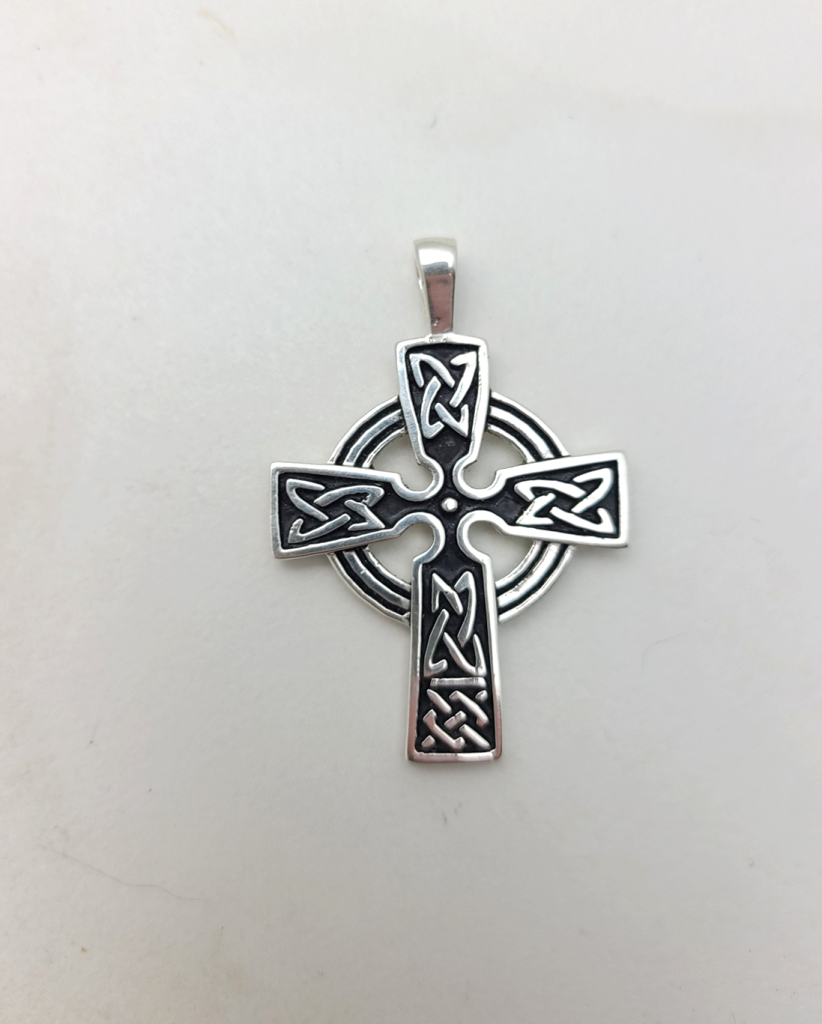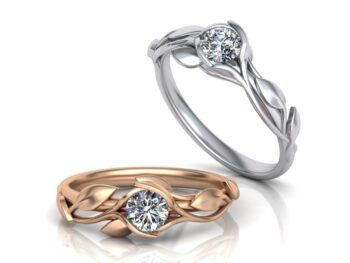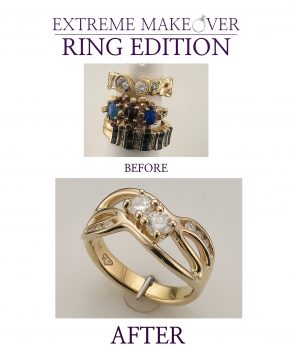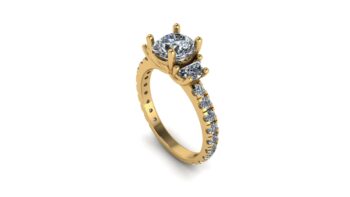Ancient Jewelry is fascinating. Almost as long as humans have worn clothing, they have worn jewelry. Sure, jewelry started out as bone or stone beads and charms, but it served the same purpose as it does today. It was meant to adorn or decorate, show wealth, or exude power and status. Jewelry has come along way since then. Thanks to modern tools and equipment, the jewelry that can be made dwarfs the capabilities of even 100 years ago. Now, intricate and detailed rings, pendants, and earrings can be made using CAD and lost wax casting that would have been a figment of the imagination back then.
However, despite of all the technological advancements made, an appreciation and revival of old and ancient jewelry making techniques is occurring. Today, many modern jewelry artisans are seeking inspiration from these ancient jewelry, styles, and techniques. That this is happening up to 5000 years after the fact is a testament to the complex and time-consuming craftsmanship of crafters of ancient jewelry.
Here are a few of the most pervasive ancient jewelry making styles and techniques that have been experiencing a renaissance in the last 5 years or so.
Cameo
A jewelry cameo is a small decorative piece of jewelry that features a raised image or design. The image is usually carved out of a single piece of material, such as shell, stone, or glass. Cameos have been around for centuries and were first created by the ancient Greeks and Romans. They were often used to depict mythological scenes or portraits of famous figures.
The art of cameo-making reached its peak during the Renaissance period, when skilled craftsmen created intricate designs that were highly sought after by the wealthy. Today, cameos are still popular and can be found in many different styles and materials. They make a great addition to any jewelry collection and can be worn with both casual and formal outfits.
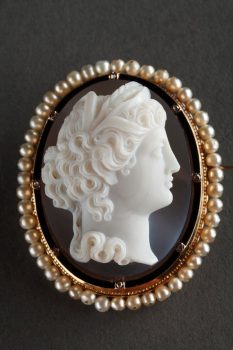
Intaglios
Intaglio is a form of art that involves carving a design into a flat surface, such as a gemstone or a piece of metal. The design is then filled with ink or paint to create a raised image. This technique has been used for thousands of years to create beautiful and intricate pieces of jewelry.
The origins of jewelry intaglio can be traced back to ancient civilizations such as the Greeks and Romans, who used intaglio to create signet rings and other types of jewelry. The technique was also popular in the Middle Ages, when it was used to create religious icons and other decorative items.
Today, jewelry intaglio is still a popular art form, with many contemporary artists creating stunning pieces using this technique. Whether you are a collector or simply appreciate the beauty of fine jewelry, a piece of jewelry intaglio is sure to impress.
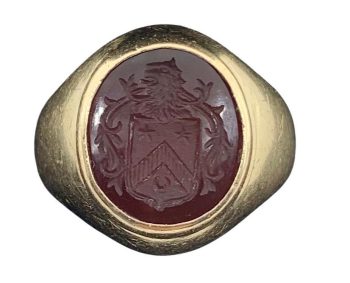
Ancient Jewelry – Filigree
Jewelry filigree is a delicate and intricate design that has been around for centuries. It involves twisting and weaving thin wires of metal to create a lacy pattern that is both beautiful and unique. The first to create this stunning design was the ancient Greeks, who used it to decorate their jewelry and other decorative items.
The Greeks were known for their love of beauty and their attention to detail, and the filigree design was no exception. They used it to adorn everything from necklaces and bracelets to hairpins and brooches. Over time, the design spread throughout the world, and it became a popular choice for jewelry makers everywhere.
Today, jewelry filigree is still a popular choice for those who appreciate the beauty of intricate designs. Whether you are looking for a piece of jewelry to wear on a special occasion or simply want to add a touch of elegance to your everyday look, filigree is a timeless choice that is sure to impress.
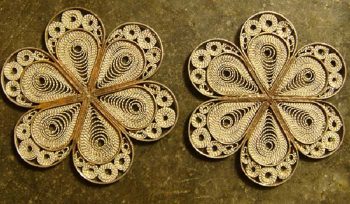
Micro Mosaic
Micro mosaics are small, intricate works of art that have been around for centuries. They are made up of tiny pieces of glass or enamel, called tesserae, that are arranged to create a larger image. The first known micro mosaic was created in Rome in the 18th century by a man named Giacomo Raffaelli.
Raffaelli was a skilled artist who was inspired by the ancient Roman mosaics he saw around the city. He began experimenting with smaller and smaller pieces of glass until he was able to create incredibly detailed images that could fit in the palm of his hand. His work quickly gained popularity and micro mosaics became a sought-after souvenir for tourists visiting Rome.
Today, micro mosaics are still highly valued for their intricate beauty and historical significance. They are often used in jewelry and other decorative objects. In my opinion, the art of micro mosaic is a testament to human creativity and ingenuity. It is amazing to think that something so small and delicate could have such a lasting impact on the art world.
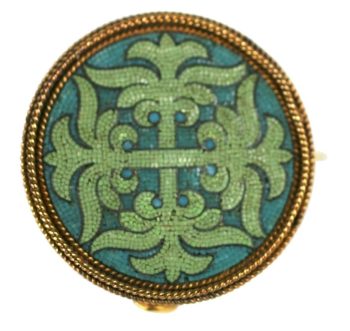
Chasing & Repousse
Chasing and repousse are techniques used in metalworking to create intricate designs and patterns on metal surfaces. The process involves hammering and shaping the metal from the reverse side to create a raised design on the front. The technique has been used for centuries, with evidence of its use dating back to ancient civilizations such as the Egyptians and Greeks.
While it is difficult to pinpoint the exact origin of chasing and repousse, it is believed to have been developed independently in various parts of the world. However, the technique gained popularity during the Renaissance period in Europe, where it was used to create elaborate designs on armor, jewelry, and other decorative objects.
One of the most famous practitioners of chasing and repousse was the Italian goldsmith Benvenuto Cellini, who lived during the 16th century. Cellini was known for his intricate designs and exquisite craftsmanship, and his work helped to popularize the technique throughout Europe.
In my opinion, chasing and repousse is a fascinating art form that requires a great deal of skill and patience. The intricate designs and patterns that can be created using this technique are truly stunning, and it is amazing to think that this process has been used for centuries to create some of the most beautiful objects in the world. Whether you are a metalworking enthusiast or simply appreciate fine craftsmanship, chasing and repousse is definitely worth exploring further.
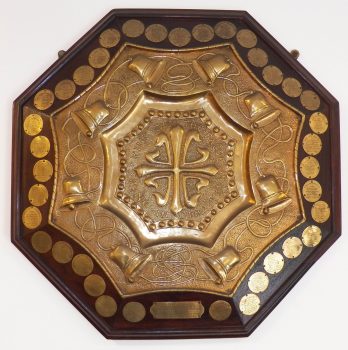
Forging Ancient Jewelry
Forging is the process of shaping metal by heating it and then hammering it into shape. It’s been around for centuries and has been used to create everything from weapons to jewelry. The first known use of forging dates back to ancient civilizations such as the Egyptians and the Greeks.
However, it was the Chinese who really perfected the art of forging. They were the first to use cast iron, which allowed them to create stronger and more durable tools and weapons. The Chinese also developed techniques such as quenching and tempering, which made their metalwork even stronger.
Overall, forging has played a crucial role in human history and continues to be an important part of modern manufacturing. Whether you’re a blacksmith or just someone who appreciates the beauty and craftsmanship of metalwork, forging is a fascinating and rewarding art form to explore.
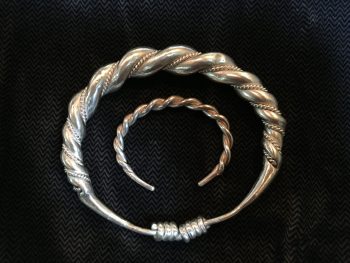
Gilding Ancient Jewelry
Gilding is the process of applying a thin layer of gold to a surface. It has been used for centuries to decorate and embellish objects of all kinds. The first recorded use of gilding dates back to ancient Egypt. There, it was used to decorate the tombs of pharaohs. However, it was the ancient Greeks who really perfected the art of gilding. They used it extensively to adorn their temples and statues.
The first person to use gilding in the modern sense was probably the French artist Jean-Baptiste Glomy. He lived in the 17th century and was known for his exquisite gilded frames. Glomy’s frames were so beautiful that they became highly sought after by other artists. Not long aftr that, gilding became a popular technique in the art world.
Ancient Jewelry Enameling
Ancient jewelry enameling is a technique used to decorate metal objects by fusing glass powder to their surface. The first known use of this technique dates back to the ancient Egyptians. They used it to decorate their jewelry and other objects. Enameling was also used by the Greeks and Romans, and it became particularly popular during the Byzantine era.
Enameling is a complex process that requires a great deal of skill and expertise. The artist must carefully apply layers of glass powder to the metal surface. Then, the object is heated to a high temperature in order to fuse the glass to the metal. The result is a beautiful, durable piece of jewelry that can last for centuries.
In my opinion, ancient jewelry enameling is a fascinating art form that has stood the test of time. It is incredible to think that people were using this technique thousands of years ago. And that we are still able to appreciate their beautiful creations today is also amazing. Whether you are a collector or simply someone who appreciates the beauty of ancient art, enameling is definitely worth exploring further.
At Valeria Custom Jewelry, we mainly cast all of our jewelry. However, we do use some of these techniques to enhance a piece that has been cast. If you are looking for hand fabricators, that is not us. Hut you would be able to find one very easily unless you are in a rural area. You can view our portfolio of custom engagement rings or custom pendants to look for ideas. Or you can contact us with your own idea.
